Long gone are the days of having to write out HTML by hand and then customizing it with CSS. Of course, that is still an option. But most websites are using some sort of CMS (content management system) these days. Here are the top CMS for 2020 and why you should consider using them.
Did you know that as of the start of 2020 there are over 1.7 billion websites online? And more than half of the world’s population now uses the Internet to access these websites. There are no signs showing that these numbers will start to go down either.
Now is a fantastic time to have an online presence. Whether you are trying to start a blog, an online shop, or a full-fledged business website, it is now easier than ever to at least get a decent site up.
The type of website CMS you choose will be based on a number of things. Some of these aspects may include certain things like user-friendliness or available plugins and theme options.
With all that being said, there are dozens of different CMS platforms out there to choose from. I am sure you have heard of at least a couple of them. Let’s take a look at what a CMS actually is and then talk about some of the best CMS for websites that are available today.
What is a CMS?

Simply put, a CMS allows someone to create a full-scale, professional, working website. The kicker, you should be able to do it without touching any type of code.
When you make a choice from some of the top CMS platforms available, you actually don’t have to understand how a website works. You are given a template to work with, and within that CMS, you can perform certain functions and build a website.
All of the best CMS platforms have their own set of templates, themes, plugins, and extensions. The freedom you have to build is based on what these can do, as well as your outlying knowledge of the particular CMS you have chosen.
It is important to understand that while all the top CMS platforms give you the ability to create websites without having to touch code, you can still add and subtract your own code and build around what is there.
Of course, you will need to understand things like CSS, HTML and PHP. But that is one of the great things about this. You get a running start without having to use code. Or, you can apply it and add even more functionality.
Top 10 Most Popular CMS Platforms
Let’s take a look at the top 10 CMS platforms by market share. This should give you a good idea of the best ones available and why you may want to choose them.
Note: These are not necessarily listed by market share. And we’re not including stand-alone hosted systems as most are restrictive to their own networks. Meaning, any of the platforms below can easily be migrated and moved without much hassle while giving you full control of your website.
1. WordPress
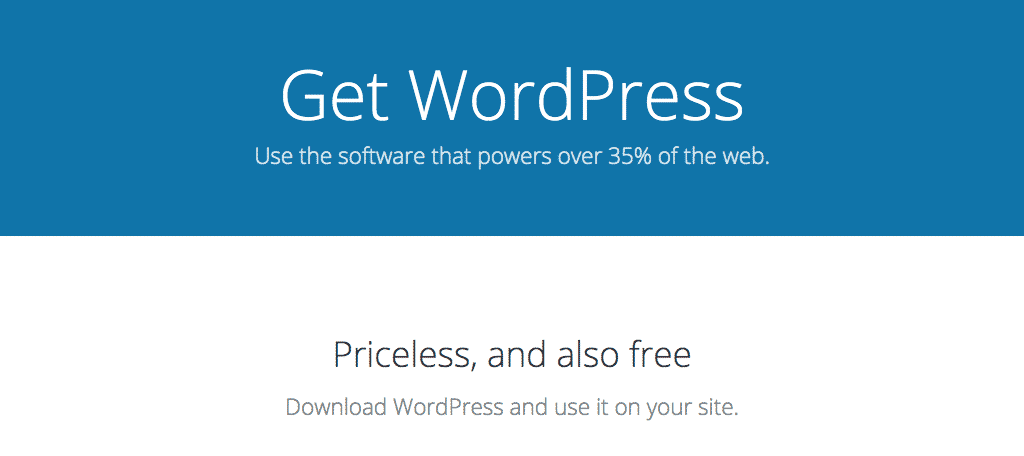
Yes, more than likely you have heard of WordPress. This should be applicable even if you are a beginner. Basically, WordPress dominates the market share for websites live online. Matter of fact, the rest of the CMS platforms on this list will be much closer to one another as far as market share goes.
WordPress has become the top CMS in the world for a number of reasons. This CMS now has over 50% of the market share online, and none of the other platforms come close.
Remember, the market share and number of websites using the CMS are different. However, almost 36% of the websites online are run on the WordPress CMS platform. This leads to the relevant market share listed above.
People have chosen to build with WordPress for a number of reasons. It is an open-source system (as are many of the top CMS platforms on this list) and it is very user-friendly and easy to learn.
There are thousands of free themes and plugins available for you to choose from. These, on top of the thousands more premium themes and plugins you can use to build a website.
Installing WordPress is very simple as well. You can use a one-click installation method provided by various web hosting plans, or you can install it manually.
The downside to WordPress is that while it is user-friendly, the platform can be difficult to manage overall without learning a few things.
2. Joomla

Coming in second with a market share of about 4.5% is Joomla. Going into 2020, Joomla’s overall market share continues to drop over time. That being said, the platform is still one of the top CMS platforms available and still has a very large following. With over 2.5 million sites running on Joomla, there is no sign that this very popular CMS is going anywhere.
With all that being said, the fact of the matter is this, Joomla actually offers an advanced user management system that comes available out of the box. Joomla is actually built around a series of modules and components. They also use templates instead of themes.
Joomla is more difficult to learn than WordPress, but it does offer more flexibility in the build if you are able to learn it correctly. This is because you are not locked into a certain theme layout or look, as you can use the templates and modules to display flexible content types in different ways.
Getting started with a Joomla installation is not difficult. Like WordPress, you can use a one-click installer provided in your cPanel to install the CMS and start working with it. If you want to install it manually, you can do that as well.
Joomla is a solid website CMS and it is definitely worth a look.
3. Drupal
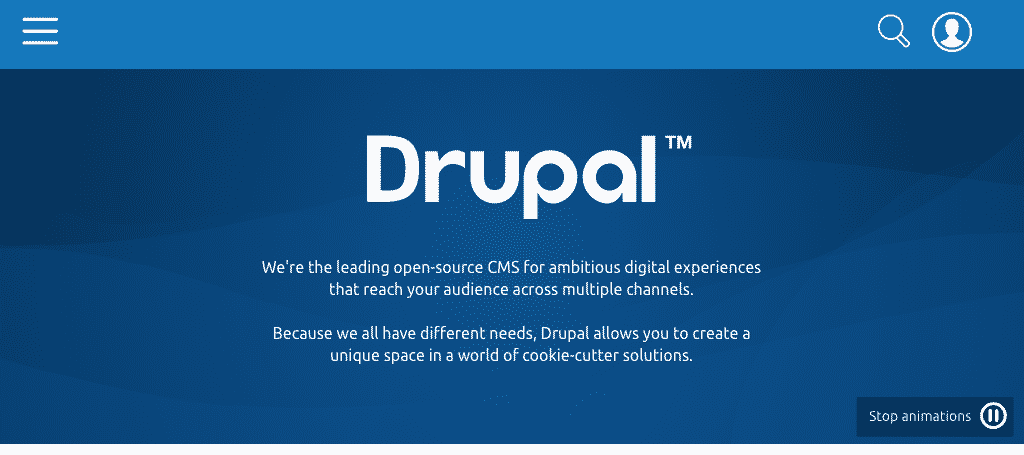
Drupal arguably has the most dedicated fan base of all the top CMS platforms available on this list. This website CMS holds about 2.9% of the overall CMS market share, but that 2.9% is very strong and very dedicated to the platform.
Drupal actually combines a lot of what WordPress and Joomla offer while trying to put it into a working platform. For the most part, it is very successful.
Like I said, it is nowhere near as popular as some of the other CMS platforms, but it does offer some unique advantages such as flexible custom post types. Drupal also gives the user a ton of control with the 38,000 modules and 2,700 themes developers make available.
The Drupal platform is also easy to install and get ready for use. With over 1 million sites using Drupal now, it should remain one of the top CMS platforms for years to come.
4. Typo3
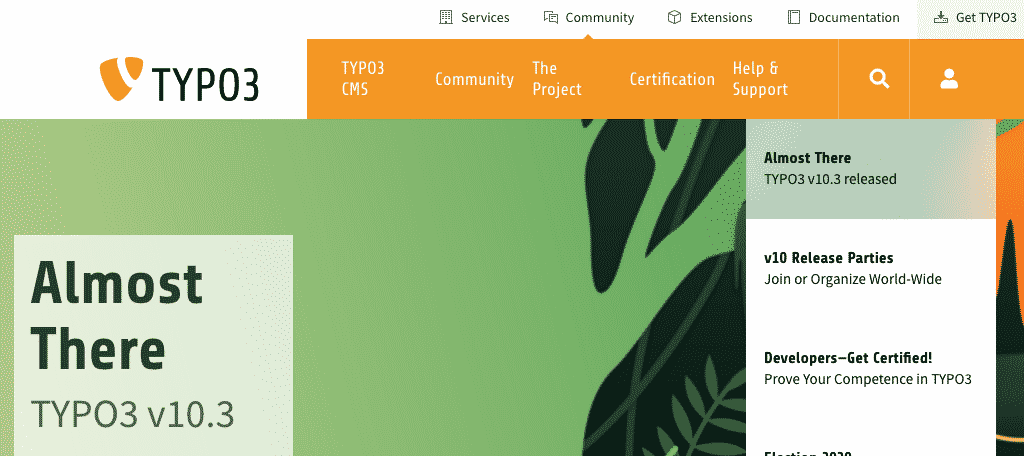
Typo3 is yet another open source CMS. However, this one is geared more toward enterprise content, so bigger, enterprise sites might look toward this platform.
It is a very professional system that is flexible when it comes to managing content. Typo3 is built on the idea of modularity and diversity.
It is a fantastic script and platform to run whether you want a one-page business website or a fully functioning content-driven news site.
There are several thousand available extensions that you can easily install and expand. Need a gallery? No problem. Want to start an online store? They have that extension, too.
With tons of content types and good support, Typo3 allows for both static and dynamic content creation. This is definitely a top CMS that is worth a look.
5. Magento

Magento is an eCommerce platform that is specifically used for building online stores and is written in PHP code. It is free, open source software, much like WordPress and WooCommerce.
Magento will give you the ability to accept online payments, manage products, and keep up with customers. Right now, it is holding on to a market share of 1.4%. When you think about it, for a stand-alone free, eCommerce CMS, it is actually doing very well.
There are actually a little over 250,000 websites online that are using Magento. Even more impressive is the fact that the use of the Magento CMS is actually increasing at a very respectable rate.
You can also easily install Magento using a one-click installation method that can be found in your cPanel.
This is a very respectable CMS and is worth a look if you are interested in getting an eCommerce store up and running while having freedom to build.
6. Open Real Estate
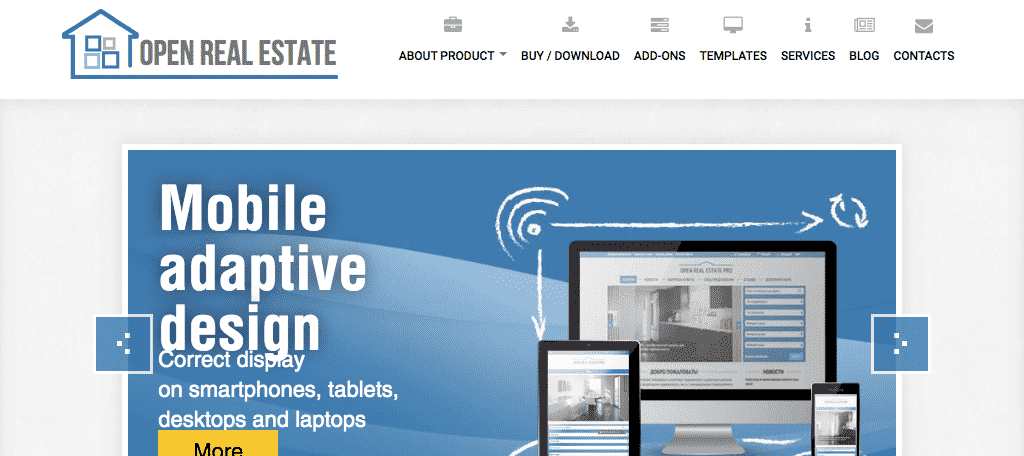
Open Real Estate allows you to build a dynamic real estate website with relative ease. Using this top CMS platform, you don’t need to build a real estate site and then add a bunch of third-party plugins to make it work properly.
With an easy to use and understand interface, Open Real Estate will allow you to create a real-estate-related website using its tools, modules, and functionality.
The CMS gives you the ability to build a site (whether an agent or a company) and then connect with real estate owners and buyers.
It provides easy monetization, module SEO, and a fully modular architecture. If you are thinking about a CMS solution that specializes in real estate sites, then this is an option you want to consider.
7. OpenCart
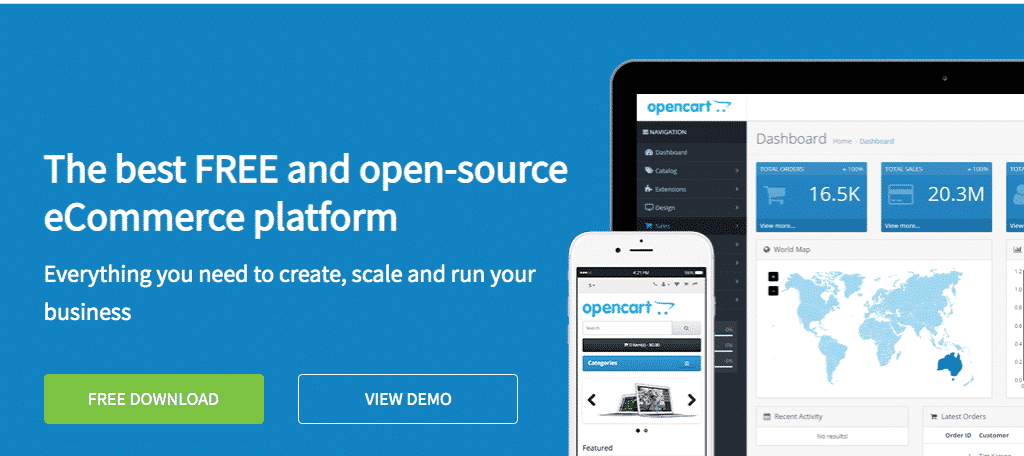
Another top CMS platform is OpenCart. This installation is particularly desirable for website builders who want to install a very robust eCommerce system at a low cost.
The system is very simple to install using the one-click Softaculous installer. The open source CMS is free, and once installed, is not difficult to run and use.
It has a powerful store management backend, tons of extensions and themes, and a robust community of dedicated and commercial support. It also offers one of the very best SEO optimized eCommerce platforms available.
OpenCart actually holds almost 1% of a market share online. It is bigger than many think, probably because of the eCommerce solution being so simple to use.
8. Serendipity
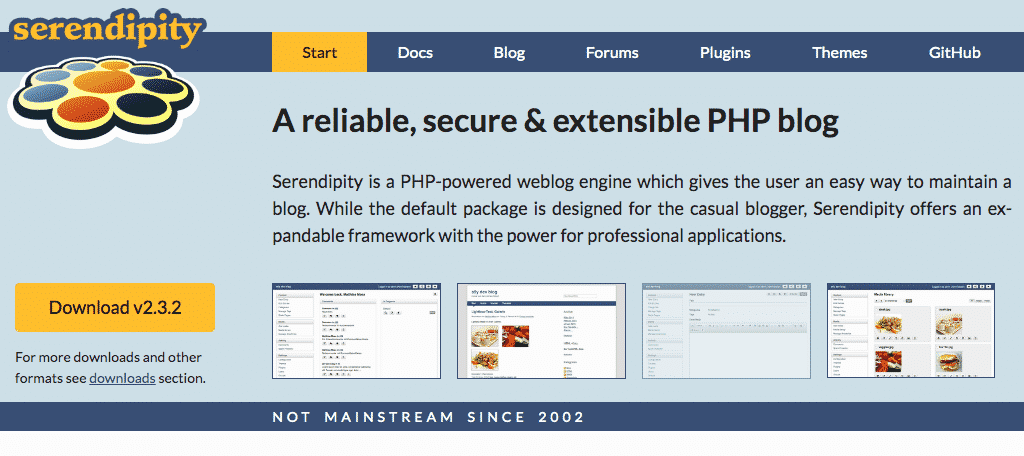
Serendipity is not as well known as many of the other CMS platforms. That being said, it is a very lightweight (probably the most lightweight CMS on this list) and user-friendly. The system is perfect for small blogs and offers a lot of functionality.
Even though it is lightweight, Serendipity does offer built-in dynamic cache settings for optimal performance. Like the other CMS platforms on our list, Serendipity also has a large selection of themes and plugins that will help you expand and customize the website.
Perhaps one of the most interesting things about this platform is that you can install over 120 plugins with just one click. This gives you access to everything in one spot, allowing you to build and enhance your site on the fly.
The thing to remember with Serendipity is that it is definitely geared toward smaller blogs. If you are trying to expand into more of a content-driven, business website, then you may want to look elsewhere.
Bloggers, this is for you.
9. Moodle
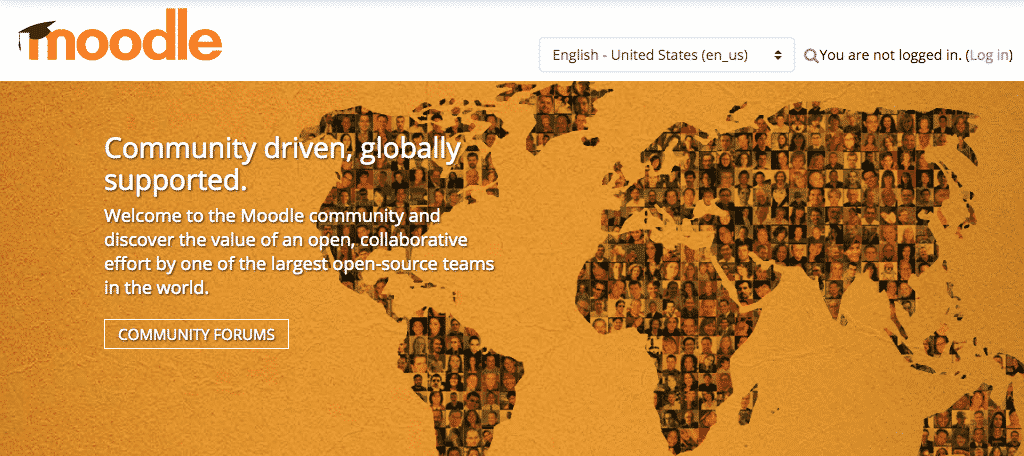
Moodle is a CMS that allows you to build online learning courses. These are valuable for educators and institutes trying to build online courses for people to easily access.
This is another open source system that is supported by a very diverse global community. It provides users access to a vast online forum and community section that is available in dozens of different languages.
Moodle is the top CMS platform out there if you are searching for something that allows you to collaborate and build a dynamic learning environment. The platform is not hard to use and has a lot of resources to help you build the site you envision.
10. PrestaShop

Coming in at number 10 and rounding out this list of top CMS platforms for 2020 is PrestaShop. Holding on to a market share of 1%, PrestaShop can be easily installed in just a couple of minutes.
A lot like Magento, PrestaShop provides those who want to use it with a ready-made solution that will allow you to create and manage an online store.
This is also an open source, eCommerce solution that is written in PHP, much like a couple of the predecessors above. It gives you the ability to completely customize your store and website without having to touch any sort of code.
The entire setup is extremely user-friendly and is available in 75 different languages. PrestaShop is definitely worth a look.
Final Thoughts
As the years go by, it is always fun to see what all the top CMS platforms are doing and what they have done to compete with one another over the year before. That being said, it is clear right now that WordPress is by far the most popular, and arguably the best CMS overall.
If you look at statistics alone, it is WordPress and then everyone else. That is not likely to change anytime soon. However, there are indeed a lot of really great options available to you.
If you are not interested in the bog boys, then the rest of this list offers plenty of alternatives.
It really depends on what kind of site you want to have. If you want the most freedom for design and functionality, then WordPress, Joomla, Drupal, Magento, and PrestaShop are probably the choices for you.
One last thing I want you to remember and consider. When you build a website on an open source system, you can take it with you anywhere. That is to say, you can move web host providers and just take the database and site files.
Have fun, check out all the top CMS platform options available, and see which one you like the best.


Have you heard about “Opentext”?